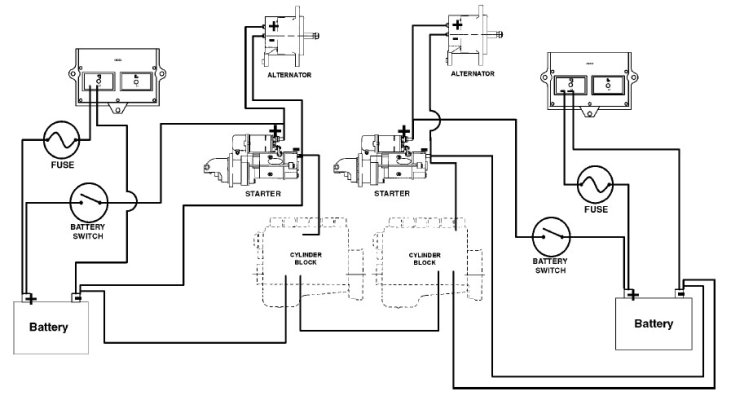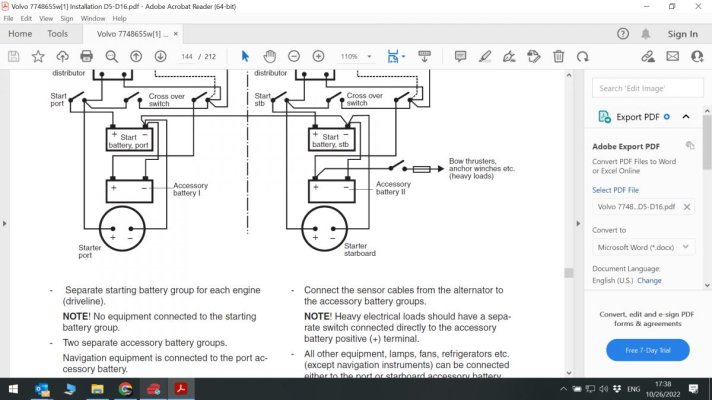Osprey69
Senior Member
- Joined
- Jan 12, 2021
- Messages
- 433
- Vessel Name
- Rogue
- Vessel Make
- Gulfstar 49 MY
So I discovered my house bank (2 8Ds, #1 and #2) are not being charged by the CAT 3208s while underway
Starboard engine is not charging its start battery (single 8D, #4).
Port engine is charging its starting battery (again single 8D, #3).
To me having only 2 house 8D house batteries, and not tapping into another 8D makes no sense given all that battery capacity sitting idle 98% of the time.
Conveniently #3 start battery (the one being charged) is on a 1/2/all/off switch next to the house battery 1/2/all/off switch.
There is no jumper from that start #2 battery switch pole to the house #2 batt switch pole.
I intend to jump that start battery to join the house bank when both switches are on "all". I get house charging underway and increased capacity all for the cost of a single chunk of hefty wire.
I think.
Understanding I need to be careful to not drain a start battery. If I do - 1) the generator can charge it, 2) use a jump pack, 3) come home on one engine or 4) replace the starboard switch from a 1/off to a 1/2/all/off and jump the 2 starting batteries together also (this seems to make the most sense).
Am I missing anything here?
And as a related question, need I put a smart regulator on the alternator out put (standard alternator) to assure I get the most out of it? Given battery bank size, I am thinking I do not.
Thanks in advance.
Starboard engine is not charging its start battery (single 8D, #4).
Port engine is charging its starting battery (again single 8D, #3).
To me having only 2 house 8D house batteries, and not tapping into another 8D makes no sense given all that battery capacity sitting idle 98% of the time.
Conveniently #3 start battery (the one being charged) is on a 1/2/all/off switch next to the house battery 1/2/all/off switch.
There is no jumper from that start #2 battery switch pole to the house #2 batt switch pole.
I intend to jump that start battery to join the house bank when both switches are on "all". I get house charging underway and increased capacity all for the cost of a single chunk of hefty wire.
I think.
Understanding I need to be careful to not drain a start battery. If I do - 1) the generator can charge it, 2) use a jump pack, 3) come home on one engine or 4) replace the starboard switch from a 1/off to a 1/2/all/off and jump the 2 starting batteries together also (this seems to make the most sense).
Am I missing anything here?
And as a related question, need I put a smart regulator on the alternator out put (standard alternator) to assure I get the most out of it? Given battery bank size, I am thinking I do not.
Thanks in advance.


